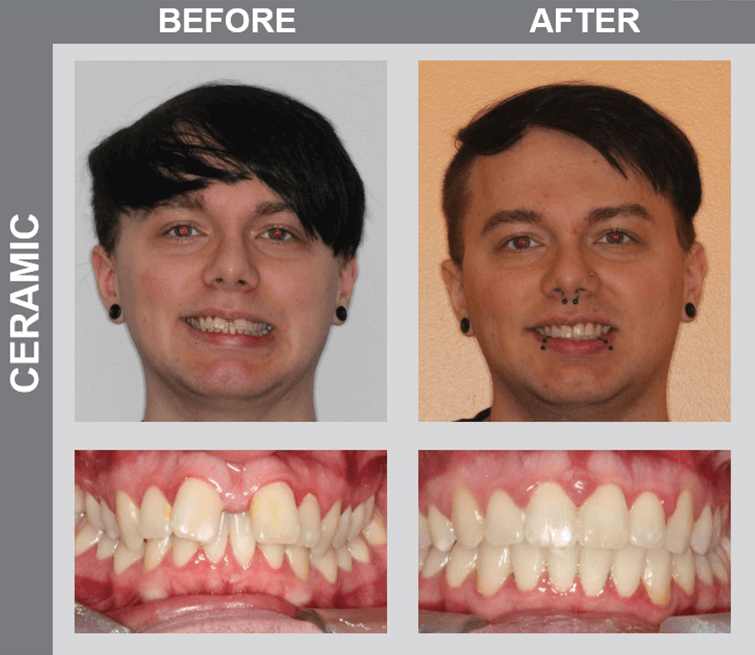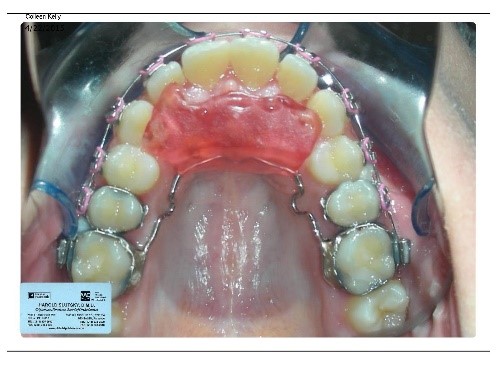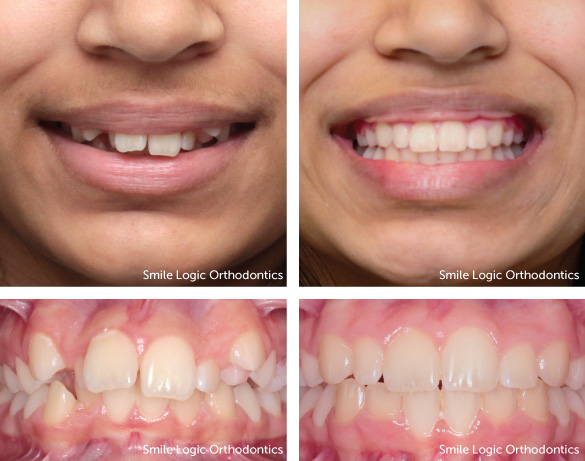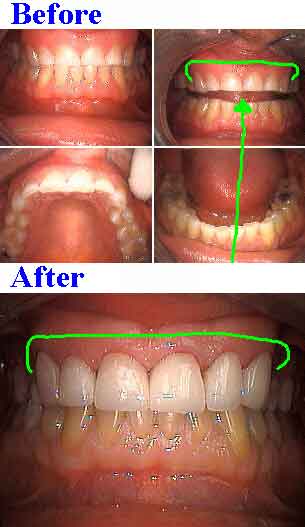The benefits of wearing a bite plate are numerous. Firstly, it helps to align your teeth and correct any bite misalignment. This can improve your smile and enhance your overall facial appearance. Secondly, a bite plate can alleviate jaw pain and discomfort caused by TMJ disorders or teeth grinding. By providing a cushioning effect, it reduces the pressure on your jaw joint and prevents further damage.
In addition, a bite plate can also improve your ability to chew and speak properly. By correcting your bite, it ensures that your teeth come together in the correct position, making it easier to bite and chew food. It can also improve your speech by eliminating any speech impediments caused by dental issues.
What is a Bite Plate?
A bite plate is a dental appliance that is used to treat various dental problems related to the alignment of the teeth and jaw. It is a custom-made device that fits over the upper or lower teeth and helps to correct the bite and improve overall dental health.
Types of Bite Plates
There are different types of bite plates available, depending on the specific dental issue that needs to be addressed. Some common types include:
- Anterior Bite Plate: This type of bite plate is used to correct problems with the front teeth and is often used in cases of overbite or underbite.
- Posterior Bite Plate: This type of bite plate is used to correct problems with the back teeth and is often used in cases of crossbite or open bite.
- Palatal Expansion Plate: This type of bite plate is used to widen the upper jaw and is often used in cases of narrow dental arches or crowding of teeth.
How Does a Bite Plate Work?
A bite plate works by exerting gentle pressure on the teeth and jaw, gradually moving them into the correct position. It helps to align the teeth and improve the bite, which in turn can alleviate various dental problems.
When a bite plate is worn, it helps to distribute the forces of biting and chewing more evenly across the teeth, reducing the strain on individual teeth and preventing excessive wear. It also helps to reposition the jaw, allowing for proper alignment and reducing the risk of temporomandibular joint (TMJ) disorders.
The duration of wearing a bite plate varies depending on the specific dental issue being treated and the individual’s response to the treatment. In some cases, a bite plate may need to be worn for several months or even years to achieve the desired results.
Benefits of Using a Bite Plate
Using a bite plate can provide several benefits, including:
- Correcting misaligned teeth and jaw
- Improving the bite and chewing function
- Reducing the risk of dental problems such as tooth decay and gum disease
- Relieving symptoms of TMJ disorders
- Enhancing overall dental health and aesthetics
How Does a Bite Plate Work?
A bite plate is a dental appliance that is used to treat various dental problems related to the bite, jaw alignment, and teeth grinding. It works by providing a stable and even surface for the teeth to rest on, which helps to alleviate pressure and correct any misalignments or imbalances in the bite.
1. Correcting Misalignments
One of the main functions of a bite plate is to correct misalignments in the bite. Misalignments can occur due to various factors such as genetics, thumb sucking, or trauma to the jaw. These misalignments can lead to problems like an overbite, underbite, or crossbite, which can affect the overall function and appearance of the teeth.
A bite plate works by gradually shifting the position of the teeth and jaw to correct these misalignments. It applies gentle and constant pressure on the teeth, encouraging them to move into their correct positions over time. This process is usually done in conjunction with orthodontic treatment, such as braces or clear aligners, to achieve optimal results.
2. Relieving Jaw Tension
Another common dental problem that can be treated with a bite plate is jaw tension or temporomandibular joint disorder (TMJ). TMJ is a condition that causes pain and discomfort in the jaw joint and surrounding muscles. It can be caused by factors such as teeth grinding, clenching, or an improper bite.
A bite plate helps to relieve jaw tension by providing a cushioning effect between the upper and lower teeth. It prevents the teeth from grinding against each other, reducing the strain on the jaw joint and muscles. By wearing a bite plate, the jaw is able to relax and heal, alleviating the symptoms of TMJ.
3. Preventing Teeth Grinding
A bite plate is an effective tool for preventing teeth grinding. It acts as a barrier between the upper and lower teeth, preventing them from coming into contact with each other. This helps to protect the teeth from wear and tear and reduces the strain on the jaw muscles. By wearing a bite plate, individuals with bruxism can experience relief from their symptoms and prevent further damage to their teeth.
Common Dental Problems That Can Be Treated with a Bite Plate
1. Temporomandibular Joint Disorder (TMJ)
TMJ is a condition that affects the temporomandibular joint, which connects the jawbone to the skull. It can cause pain, discomfort, and difficulty in jaw movement. A bite plate can help relieve the pressure on the joint and reduce the symptoms associated with TMJ. By repositioning the jaw, the bite plate helps to alleviate the strain on the joint and promote healing.
2. Bruxism
Bruxism is a condition characterized by teeth grinding or clenching, usually during sleep. This can lead to worn-down teeth, jaw pain, headaches, and other dental problems. A bite plate can act as a protective barrier between the upper and lower teeth, preventing them from grinding against each other. By wearing a bite plate, the forces of grinding and clenching are distributed evenly, reducing the damage to the teeth and alleviating the associated symptoms.
3. Malocclusion
Malocclusion refers to misalignment of the teeth, which can result in an improper bite. This can cause difficulties in chewing, speaking, and even breathing. A bite plate can help correct the alignment of the teeth and improve the bite. By applying gentle pressure on the teeth, the bite plate gradually moves them into their proper position, resulting in a more aligned bite and improved dental function.
4. Tooth Sensitivity
Tooth sensitivity is a common dental problem that can cause discomfort or pain when consuming hot, cold, or sweet foods and beverages. A bite plate can help alleviate tooth sensitivity by creating a barrier between the teeth and external stimuli. This reduces the direct contact between the teeth and the triggering substances, providing relief from sensitivity and allowing for more enjoyable eating and drinking experiences.
Overall, a bite plate can be an effective treatment option for various dental problems. It can help alleviate the symptoms associated with TMJ, bruxism, malocclusion, and tooth sensitivity. If you are experiencing any of these dental issues, it is recommended to consult with a dentist who can evaluate your condition and determine if a bite plate is a suitable treatment option for you.
Benefits of Using a Bite Plate
Using a bite plate can provide several benefits for your dental health. Here are some of the key advantages:
1. Corrects Misalignment
A bite plate is often used to correct misalignment issues in the teeth and jaw. It can help to shift the teeth into their proper positions, improving the overall alignment of your bite. This can help to alleviate problems such as jaw pain, difficulty chewing, and speech issues.
2. Reduces Teeth Grinding

3. Relieves Jaw Tension
https://upload.wikimedia.org/wikipedia/commons/c/ca/1×1.png
If you experience jaw tension or muscle pain, a bite plate can provide relief. By creating a separation between your upper and lower teeth, it helps to relax the jaw muscles and alleviate tension. This can be particularly beneficial for individuals who clench their jaws or have temporomandibular joint (TMJ) disorders.
4. Prevents TMJ Disorders

TMJ disorders can cause a range of symptoms, including jaw pain, headaches, and difficulty opening and closing the mouth. A bite plate can help to prevent these disorders by promoting proper jaw alignment and reducing stress on the temporomandibular joint. Regular use of a bite plate can help to minimize the risk of developing TMJ-related problems.
5. Protects Dental Work
If you have dental restorations such as crowns, bridges, or implants, a bite plate can help to protect them. It acts as a cushion, absorbing the forces exerted during biting and chewing. By wearing a bite plate, you can extend the lifespan of your dental work and prevent damage or dislodgment.
| Benefits of Using a Bite Plate |
|---|
| Corrects Misalignment |
| Reduces Teeth Grinding |
| Relieves Jaw Tension |
| Prevents TMJ Disorders |
| Protects Dental Work |
Before Using a Bite Plate: What to Expect
First, your dentist will take impressions of your teeth to create a custom-made bite plate that fits comfortably in your mouth. This process may involve using dental putty or a digital scanner to capture the shape and alignment of your teeth.
Before using the bite plate, you may experience some initial discomfort or difficulty speaking. This is normal and should subside as you become accustomed to wearing the bite plate. Your dentist may recommend starting with shorter wear times and gradually increasing the duration to help you adjust more easily.
It is also important to note that a bite plate may affect your eating habits. You may need to avoid certain hard or sticky foods that could damage the bite plate or make it uncomfortable to wear. Your dentist will provide a list of foods to avoid and offer alternative options to ensure you can maintain a healthy diet while using the bite plate.
After Using a Bite Plate: What to Expect
After using a bite plate, you can expect to experience several positive changes in your dental health. Here are some of the things you may notice:
1. Improved Bite Alignment
One of the main benefits of using a bite plate is that it can help improve your bite alignment. Over time, the bite plate will gradually shift your teeth into the correct position, resulting in a more aligned bite. This can help alleviate issues such as jaw pain, headaches, and teeth grinding.
2. Reduced Teeth Grinding

If you suffer from teeth grinding or bruxism, using a bite plate can help reduce this habit. The bite plate acts as a barrier between your upper and lower teeth, preventing them from grinding against each other. This can help protect your tooth enamel and reduce the risk of dental damage caused by grinding.
3. Decreased Jaw Pain
4. Improved Speech
If your misaligned bite has been affecting your speech, using a bite plate can help improve your pronunciation and clarity. By correcting the alignment of your teeth, the bite plate can help you speak more clearly and confidently.
5. Enhanced Chewing Efficiency
A misaligned bite can make it difficult to chew food properly, leading to digestive issues and discomfort. After using a bite plate, you may notice that your chewing efficiency improves. With a more aligned bite, you will be able to chew food more effectively, aiding in digestion and reducing any discomfort while eating.
How Long Should You Use a Bite Plate?
During the course of treatment, regular check-ups with the dentist or orthodontist may be necessary to monitor progress and make any necessary adjustments to the bite plate. These appointments will also provide an opportunity to address any concerns or questions that may arise during the treatment process.
Once the dentist determines that the bite plate has served its purpose and the desired results have been achieved, it may be possible to discontinue use of the bite plate. However, in some cases, the dentist may recommend wearing a retainer or other orthodontic appliance to maintain the results achieved with the bite plate.
Overall, the length of time that a bite plate should be used will depend on the individual patient’s needs and the specific dental issues being addressed. By following the dentist’s instructions and attending regular check-ups, patients can ensure that they are using the bite plate for the appropriate duration and maximizing the benefits of this dental treatment.
Proper Care and Maintenance of a Bite Plate
Proper care and maintenance of a bite plate are essential to ensure its effectiveness and longevity. By following a few simple steps, you can keep your bite plate clean and functional, allowing it to continue improving your dental health. Here are some guidelines for caring for your bite plate:
Cleaning
Regular cleaning is crucial to prevent the buildup of bacteria and plaque on your bite plate. After each use, rinse the bite plate with warm water to remove any food particles or debris. Use a soft toothbrush and mild soap or denture cleaner to gently brush the bite plate, paying special attention to the areas where it comes into contact with your teeth and gums. Rinse thoroughly to remove any soap residue.
Storage
Avoiding Damage

To maintain the effectiveness of your bite plate, it is essential to avoid activities that can damage or break it. Do not chew on hard or sticky foods, as this can cause the bite plate to crack or become misaligned. Avoid biting down forcefully on the bite plate, as this can also lead to damage. If you participate in sports or other physical activities, remove the bite plate to prevent accidental damage.
Regular Check-ups
Replacement
| Do: | Don’t: |
|---|---|
| – Clean your bite plate regularly | – Chew on hard or sticky foods |
| – Store your bite plate in a clean, dry container | – Bite down forcefully on the bite plate |
| – Schedule regular check-ups with your dentist | – Store your bite plate in direct sunlight or extreme temperatures |
| – Follow your dentist’s recommendations for replacement | – Neglect regular cleaning and maintenance |
By following these care and maintenance guidelines, you can ensure that your bite plate remains in good condition and continues to improve your dental health. Remember to consult your dentist if you have any concerns or questions about the care of your bite plate.
Can Anyone Use a Bite Plate?
Factors to Consider
There are several factors that a dentist will consider before recommending a bite plate:
- Dental Condition: The dentist will assess your dental condition to determine if a bite plate is necessary. Bite plates are commonly used to treat issues such as teeth grinding, jaw clenching, and temporomandibular joint disorder (TMJ).
- Age: Age can play a role in determining the suitability of a bite plate. Children may require a different type of dental appliance, such as a nightguard, to address their specific dental issues.
- Overall Health: Your overall health will also be taken into consideration. Certain medical conditions or medications may affect the effectiveness or safety of using a bite plate.
Consulting a Dentist
If you are experiencing dental problems that may benefit from using a bite plate, it is essential to consult a dentist. During the consultation, the dentist will evaluate your dental condition, discuss your symptoms, and determine if a bite plate is the appropriate treatment option for you.
The dentist will also provide detailed instructions on how to use and care for the bite plate. They may take impressions of your teeth to create a custom-fitted bite plate that will provide the best results.
Consulting a Dentist for Bite Plate Treatment
When you visit a dentist for bite plate treatment, they will first conduct a thorough examination of your teeth and jaw. This may involve taking X-rays, impressions, and measurements to ensure that the bite plate is tailored to your specific needs.
During the consultation, the dentist will discuss your dental history and any symptoms you may be experiencing. They will also explain the benefits of using a bite plate and how it can help improve your dental health. The dentist will address any concerns or questions you may have and provide you with detailed information about the treatment process.
Once it is determined that a bite plate is the appropriate treatment for your dental condition, the dentist will begin the process of creating your custom appliance. This typically involves taking impressions of your teeth and sending them to a dental laboratory, where the bite plate will be fabricated according to the dentist’s specifications.
After the bite plate is ready, you will return to the dentist’s office for a fitting. The dentist will ensure that the bite plate fits comfortably and correctly in your mouth. They may make adjustments as needed to ensure optimal function and effectiveness.
Throughout the treatment process, your dentist will closely monitor your progress and make any necessary adjustments to the bite plate. They will also provide you with instructions on how to properly care for and maintain the appliance.
Regular follow-up appointments will be scheduled to assess the effectiveness of the bite plate and make any necessary modifications. Your dentist will also provide guidance on how long you should continue to use the bite plate to achieve the desired results.

Dr. Fidel Cann: Esteemed orthodontist with a lifelong dedication to enhancing smiles and oral health. Pioneering expertise, compassionate care.





